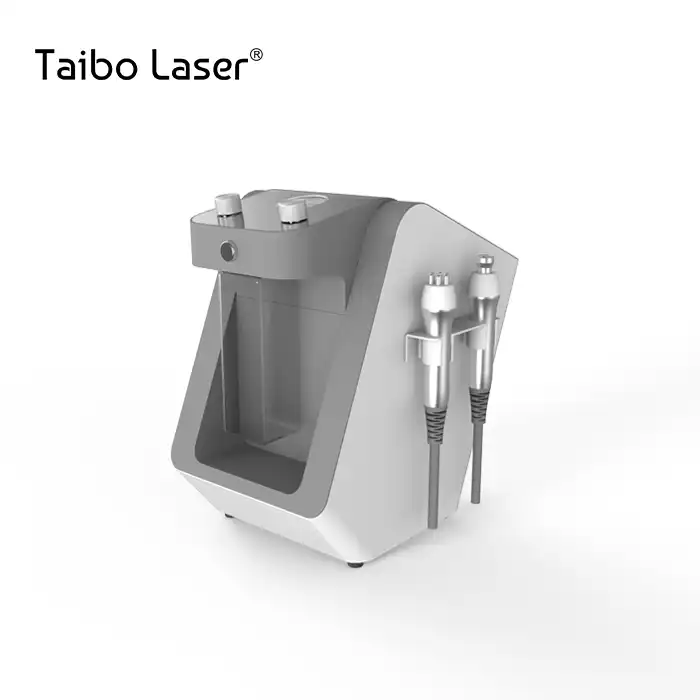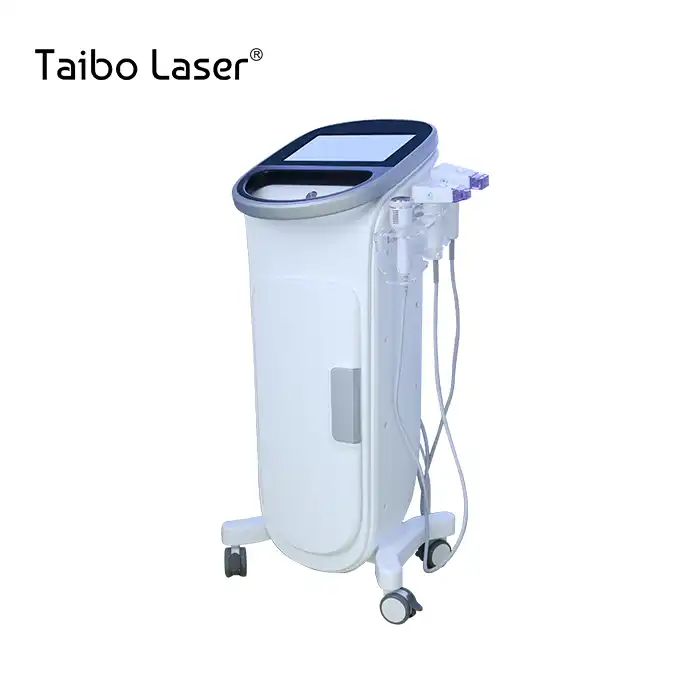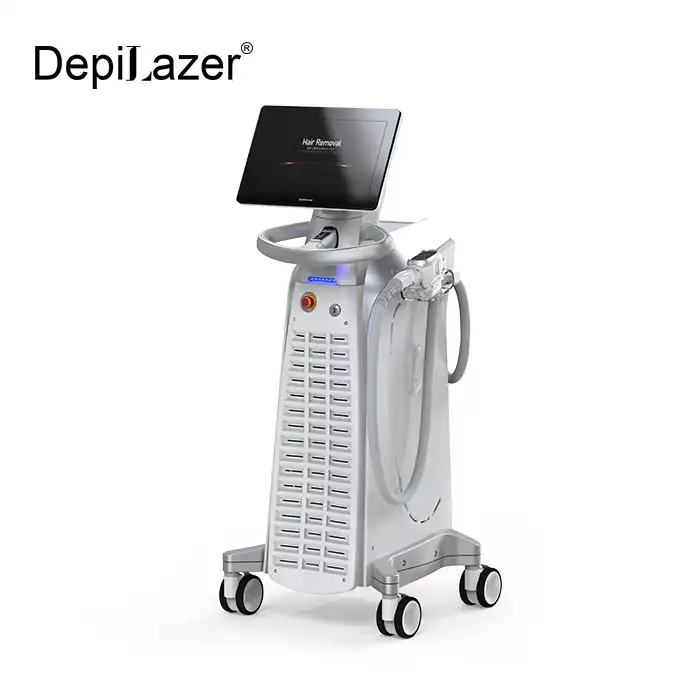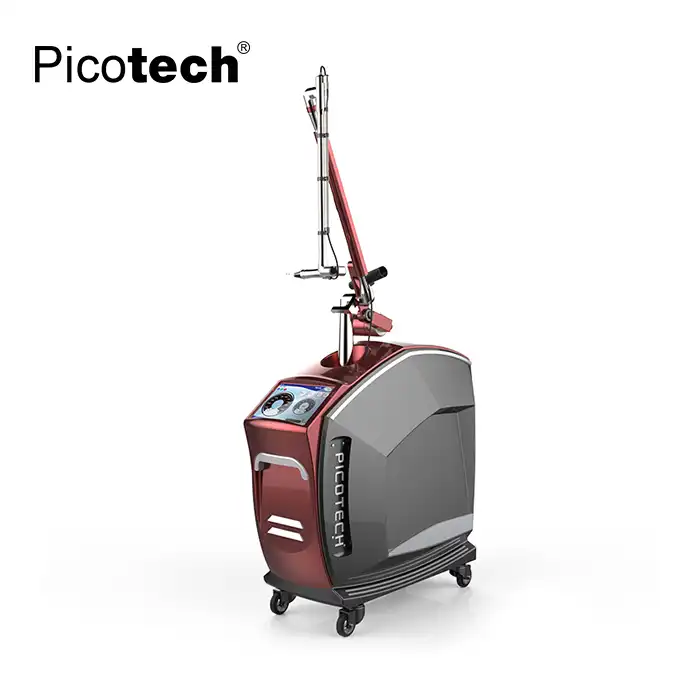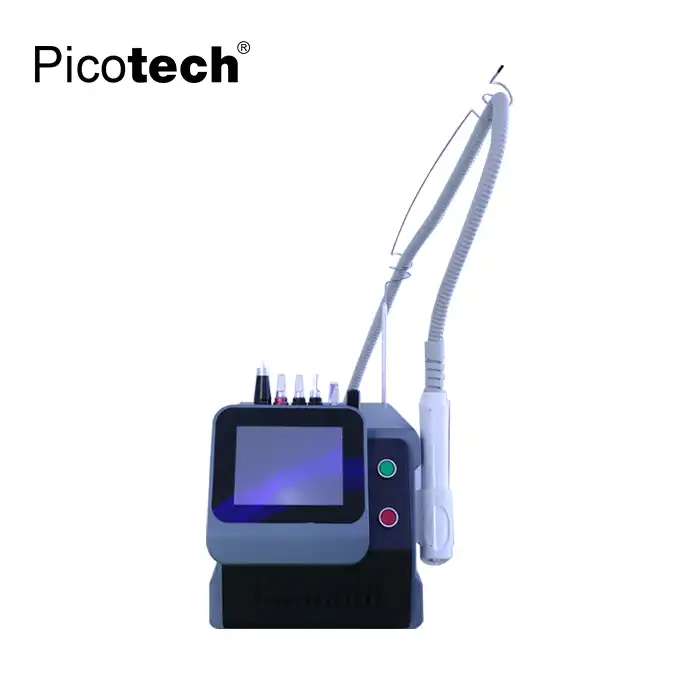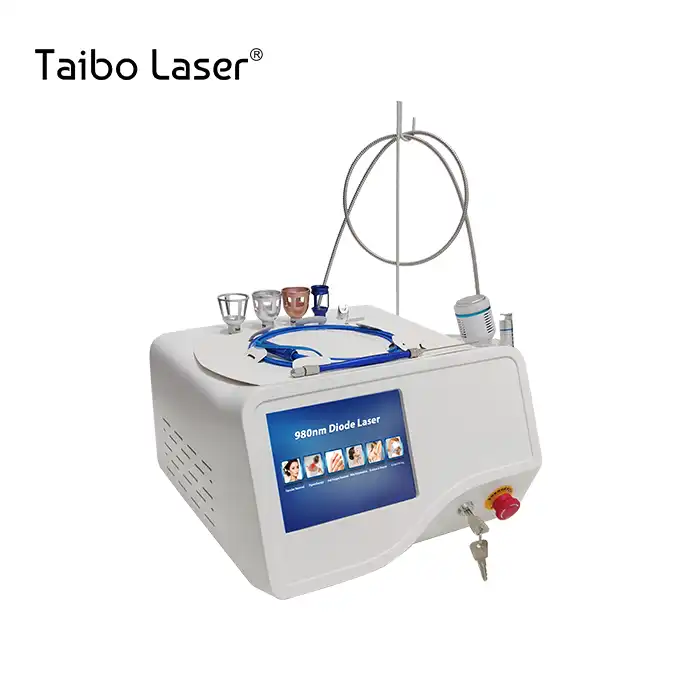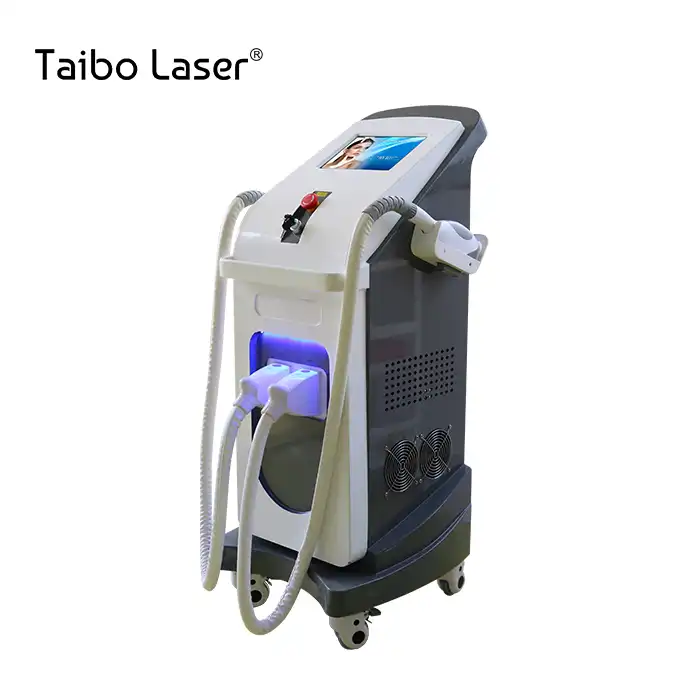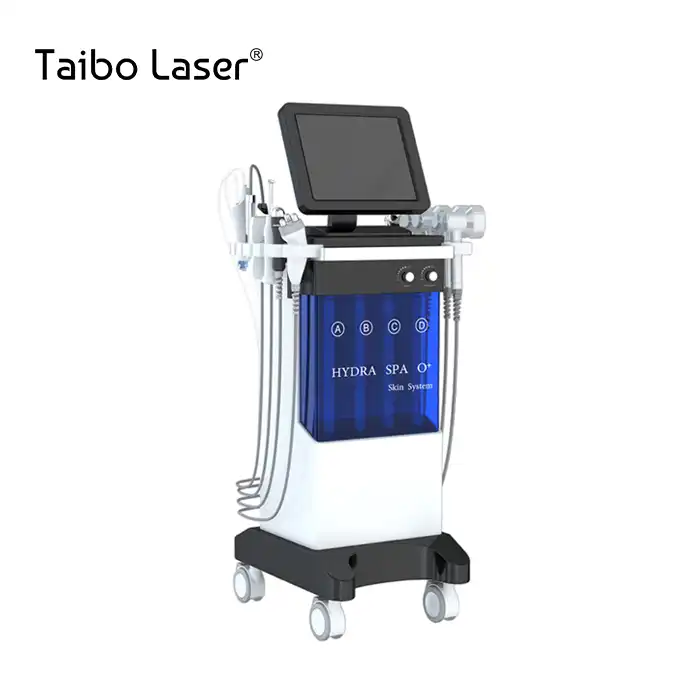
How to use laser tattoo removal machine?
2025-04-24 18:15:35
Using a laser tattoo removal machine effectively requires proper training, knowledge of the equipment, and understanding of the tattoo removal process. The q switch laser tattoo removal machine is a popular choice for this procedure due to its precision and effectiveness. To begin, ensure the treatment area is clean and prepare the patient by explaining the process. Set the laser parameters according to the tattoo's color, depth, and the patient's skin type. Apply a cooling method to minimize discomfort. During the procedure, use short pulses of high-intensity light to break down the tattoo ink particles. Multiple sessions are typically necessary for complete removal. Always follow safety protocols, including wearing protective eyewear and using proper skin cooling techniques. Monitor the patient's response and adjust settings as needed. Post-treatment care involves applying a soothing ointment and protecting the area from sun exposure. With proper technique and patience, the q switch laser can effectively fade and remove unwanted tattoos, restoring the skin to its natural appearance.
Understanding Laser Tattoo Removal Technology
The Science Behind Q-Switch Laser Technology
Q-switch laser technology revolutionized tattoo removal by offering a highly effective and precise method. This advanced system utilizes short, high-intensity pulses of laser light to target and break down tattoo ink particles. The "Q" in Q-switch stands for "quality," referring to the laser's ability to produce high-quality, powerful beams. These lasers operate on the principle of selective photothermolysis, which allows them to target specific pigments without causing significant damage to surrounding tissue. The Q-switch laser emits light in nanosecond pulses, creating a photoacoustic effect that shatters ink particles into tiny fragments. These fragments are then gradually eliminated by the body's immune system. The wavelength of the laser can be adjusted to target different ink colors effectively, making it versatile for various tattoo types.
Types of Q-Switch Lasers for Tattoo Removal
Several types of Q-switch lasers are used in tattoo removal, each with specific strengths:
- Nd:YAG (1064 nm and 532 nm): Effective for dark ink colors and suitable for all skin types
- Ruby (694 nm): Ideal for green and blue inks, but less effective on darker skin
- Alexandrite (755 nm): Excellent for treating green, blue, and black inks
The choice of laser depends on the tattoo's ink colors and the patient's skin type. Modern q switch laser tattoo removal machines often combine multiple wavelengths for comprehensive treatment.
Advantages Over Traditional Removal Methods
Q-switch laser technology offers several advantages over traditional tattoo removal methods:
- Precision: Targets ink without significant damage to surrounding skin
- Effectiveness: Can remove a wide range of ink colors
- Minimal scarring: Reduces the risk of permanent skin damage
- Faster recovery: Shorter healing time compared to surgical methods
- Non-invasive: No cutting or incisions required
These benefits have made q switch laser tattoo removal the gold standard in the industry, providing safer and more reliable results compared to older techniques like dermabrasion or excision.
Preparing for Laser Tattoo Removal Treatment
Patient Assessment and Consultation
Before initiating laser tattoo removal, a thorough patient assessment is crucial. This process begins with a comprehensive consultation to gather essential information and set realistic expectations. The practitioner should inquire about the patient's medical history, including any allergies, skin conditions, or medications that might affect the treatment. It's also important to discuss the patient's reasons for seeking tattoo removal and their expectations for the outcome. During the consultation, the practitioner should examine the tattoo, noting its size, location, colors, and estimated age. These factors will influence the treatment plan and the number of sessions required. The Kirby-Desai scale, a tool used to predict the number of treatments needed, can be helpful in this assessment. Additionally, the patient's skin type should be evaluated using the Fitzpatrick scale to determine the most appropriate laser settings and potential risks.
Safety Measures and Equipment Preparation
Ensuring safety is paramount when using a q switch laser tattoo removal machine. The treatment room should be set up with proper ventilation and equipped with necessary safety features. Essential safety measures include:
- Protective eyewear: Both the practitioner and patient must wear appropriate laser safety goggles
- Skin cooling devices: Prepare cooling methods such as cryo-air machines or ice packs to minimize discomfort and protect the epidermis
- Sterilization: Ensure all equipment and surfaces are properly sanitized
- Emergency protocols: Have a plan in place for potential adverse reactions
The q switch laser tattoo removal machine should be calibrated and tested before each use. This includes checking the laser output, ensuring the handpiece is functioning correctly, and verifying that all safety mechanisms are operational.
Pre-Treatment Skin Preparation
Proper skin preparation is essential for effective and safe laser tattoo removal. The area to be treated should be thoroughly cleaned to remove any makeup, lotions, or oils that could interfere with the laser's effectiveness or cause unwanted reactions. Some practitioners may apply a topical anesthetic to reduce discomfort during the procedure, although this is not always necessary with modern cooling techniques.
If the patient has a tan or has recently been exposed to sun, it's advisable to postpone the treatment to reduce the risk of hypopigmentation. In the weeks leading up to the treatment, patients should be advised to:
- Avoid sun exposure and tanning beds
- Discontinue use of retinoids or other photosensitizing medications
- Stay hydrated and maintain good skin health
- Avoid blood-thinning medications or supplements (with doctor's approval)
By following these preparatory steps, practitioners can optimize the safety and efficacy of the q switch laser tattoo removal procedure, setting the stage for successful treatment outcomes.
Step-by-Step Guide to Operating the Laser Tattoo Removal Machine
Setting Up the Q-Switch Laser Device
Proper setup of the q switch laser tattoo removal machine is crucial for safe and effective treatment. Begin by ensuring the device is placed on a stable surface in a well-ventilated room. Connect the machine to a reliable power source and verify that all components are securely attached. Most modern q switch lasers have a user-friendly interface for parameter selection. Familiarize yourself with the control panel and ensure the emergency stop button is easily accessible. Next, select the appropriate laser handpiece based on the tattoo's characteristics. Different handpieces may be used for varying spot sizes or wavelengths. Attach the chosen handpiece securely to the device and verify its functionality. Some machines require a warm-up period; allow sufficient time for this before commencing treatment. Calibrate the laser output using the built-in power meter or an external device to ensure accurate energy delivery. This step is crucial for maintaining consistent results across treatments. Finally, prepare any additional equipment such as cooling devices or smoke evacuators that will be used during the procedure.
Performing the Laser Tattoo Removal Procedure
With the q switch laser tattoo removal machine set up, you can proceed with the treatment:
- Cleanse the treatment area thoroughly and apply a thin layer of ultrasound gel if required.
- Adjust the laser parameters based on the tattoo's characteristics and the patient's skin type. Key parameters include:
- Wavelength: Select based on ink color (e.g., 1064 nm for black ink)
- Fluence: Start with conservative settings and adjust as needed
- Spot size: Choose based on tattoo size and density
- Repetition rate: Typically 1-10 Hz, depending on the specific device
- Perform a test spot in an inconspicuous area to assess the patient's response and adjust settings if necessary.
- Begin the treatment, moving the handpiece methodically across the tattoo. Maintain consistent overlap and spacing between laser pulses to ensure even coverage.
- Monitor the skin's response closely. A whitening or frosting effect is typically observed, indicating effective ink targeting.
- Apply cooling methods intermittently to manage patient comfort and protect the epidermis.
- For larger tattoos, consider treating in sections to manage patient tolerance and minimize risk of overtreatment.
- Upon completion, assess the treated area for any immediate concerns and apply a soothing, antibiotic ointment if needed.
Remember that multiple sessions are typically required for complete tattoo removal. Schedule follow-up treatments at appropriate intervals, usually 6-8 weeks apart, to allow for healing and ink clearance between sessions.
Post-Treatment Care and Monitoring
After the laser tattoo removal session, proper aftercare is essential for optimal results and minimal complications:
- Apply a cold compress immediately after treatment to reduce swelling and discomfort.
- Cover the treated area with a sterile dressing to protect it from infection and environmental contaminants.
- Provide the patient with detailed aftercare instructions, including:
- Keeping the area clean and dry
- Avoiding sun exposure and using high-SPF sunscreen when outdoors
- Refraining from picking or scratching the treated area
- Using recommended ointments or creams to promote healing
- Avoiding strenuous activities or excessive heat for a few days
- Schedule a follow-up appointment to assess healing and plan subsequent treatments.
- Document the treatment details, including laser settings and patient response, for future reference.
- Monitor for any signs of adverse reactions and provide contact information for emergencies.
By following these steps and maintaining open communication with the patient, you can ensure a safe and effective laser tattoo removal process using the q switch laser technology. Remember that patience and consistency are key to achieving optimal results in tattoo removal.
Conclusion
Mastering the use of a q switch laser tattoo removal machine requires a blend of technical knowledge, practical skills, and patient care. By understanding the technology, preparing thoroughly, and following a structured approach to treatment, practitioners can achieve optimal results while ensuring patient safety. Remember that each tattoo and patient is unique, necessitating a tailored approach and ongoing learning to refine your technique. If you want to get more information about this product, you can contact us at susan@taibobeauty.com.
References
1. Anderson, R.R. and Parrish, J.A. (1983). Selective photothermolysis: precise microsurgery by selective absorption of pulsed radiation. Science, 220(4596), 524-527.
2. Kirby, W., et al. (2009). The Kirby-Desai Scale: A Proposed Scale to Assess Tattoo-removal Treatments. Journal of Clinical and Aesthetic Dermatology, 2(3), 32-37.
3. Fitzpatrick, T.B. (1988). The validity and practicality of sun-reactive skin types I through VI. Archives of Dermatology, 124(6), 869-871.
4. Ho, S.G. and Goh, C.L. (2015). Laser tattoo removal: a clinical update. Journal of Cutaneous and Aesthetic Surgery, 8(1), 9-15.
5. Kent, K.M. and Graber, E.M. (2012). Laser tattoo removal: a review. Dermatologic Surgery, 38(1), 1-13.
6. Bernstein, E.F. (2017). Laser tattoo removal. Seminars in Plastic Surgery, 31(4), 147-153.
YOU MAY LIKE













